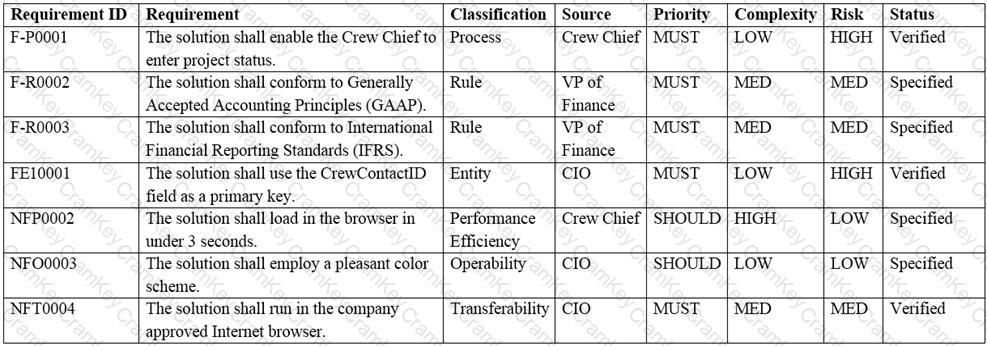| Exam Name: | Certified Business Analysis Professional | ||
| Exam Code: | CBAP Dumps | ||
| Vendor: | IIBA | Certification: | Certified Business Analysis Professional |
| Questions: | 497 Q&A's | Shared By: | peggy |
A software development company is in the process of creating a new product for their customer base. It has been several years since such a project has been initiated and the organization has created a new team to own and develop the product. The project team will be evaluated by the successful adoption of the product, which will be developed over the next 12 months.
The team's business analyst (BA) has analyzed the current state in partnership with the product owner and has been meeting with senior management to identify the goals that need to be attained. A broad view of the business has been analyzed in order to have an understanding of how the company is currently providing value to its customer base.
After the BA completed the initial analysis, the information is reviewed with leadership. At this point in the project, what will the BA be presenting?
Company A is a nation-wide leader in commercial demolition. Having just celebrated its 100th year of operations, the company decided to begin doing work internationally. The current system used for reporting company finances is unable to keep pace with the potential demands of doing work in geographically dispersed locations. Therefore, the company decided to replace its client-based Profit & Loss (P&L) reporting system with a more robust, web-based system. This will ensure transparency across the organization and enable better decision making.
The business analyst (BA) at Company A has recently completed several rounds of elicitation to determine the requirements for the new, web-based system. Over 1250 requirements were elicited. An initial Requirements Traceability Matrix (RTM) has been drafted, and a subset of the RTM can be seen below:

The BA is working on identifying additional improvement opportunities based on these requirements. Which of the following improvement opportunities is reflected in Requirement ID NFP0002?
A software development company is in the process of creating a new product for their customer base. It has been several years since such a project has been initiated and the organization has created a new team to own and develop the product. The project team will be evaluated by the successful adoption of the product, which will be developed over the next 12 months.
The team's business analyst (BA) has analyzed the current state in partnership with the product owner and has been meeting with senior management to identify the goals that need to be attained. A broad view of the business has been analyzed in order to have an understanding of how the company is currently providing value to its customer base.
What has the BA evaluated to help determine value of the project?
An organization implements a solution to increase the efficiency of its internal processes. The business analyst (BA) felt that the success of the solution is tied to the organizational structure and confirmed that the solution conforms to the organizational hierarchy. After the solution rolled out, the solution was not widely adopted among stakeholders and some features were not being utilized.
Which aspect of the organizational structure did the BA fail to consider?